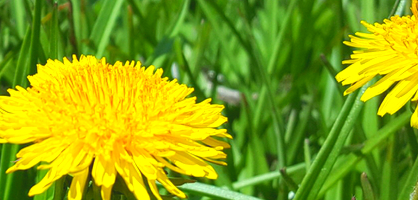A late summer planting is especially crucial for the Cruciferous veg-
etable family. Here in central Texas broccoli, cauliflower, Brussels
sprouts and cabbage thrive when planted in late August into Sep-
tember.
Late winter plantings on the other hand have a tendency to run into
early spring heat that causes them to stop producing edible heads
and start bolting (going to seed).
September is also the time to start successively seeding carrots,
beets and radishes along with leafy greens. Carrots and beets can
be planted through October and again in late winter.
Radishes and many greens can be planted throughout the winter
for long-term harvest. Don’t forget to thin your root crops along
the way so that they can develop properly. The thinned veggies,
including carrots, are great in salads or mixed into a stir-fry.
September and October are also the months that we start thinking
about the onion family. While onion sets are typically set out in
Jan/Feb, we plant the rest of the “bunch” in early fall (less than a
month away!).
Garlic cloves are planted individually, broken off from the head
and planted pointed side up. Shallots are also planted this way.
Bunching onions can be dug and divided this time of year if you
have a perennial variety (Egyptian multiplying onions are one such
kind) or direct seeded.
I tend to over plant and then any left over at the end of the harvest
season I cut or chop up and freeze for later use. Even my onion tops
freeze great and then I have them to toss into soups and gumbo
the rest of the year.
Strawberries are also best planted in the fall here in Texas. By
planting now we can get the plants established and producing be-
fore the worst of the heat hits next spring and summer. Make sure
to give your strawberries mid-late afternoon shade. They will do
fine right now, but when summer hits next year they will need it.
Planting a late summer garden for fall and winter harvest has its
challenges. Make sure you have some shade cloth or frost cover
on hand to shade the fragile seedlings and transplants from the
extreme heat.
Lay soaker hoses along the new plants and cover with pine straw
or similar to keep the new roots cool and the moisture from evap-
orating from the soil.
Fertilizing with organic fertilizers helps to feed the vegetables slow-
ly and deliberately and should not burn when applied in the late
summer/early fall heat.
You can also water in new plants and seeds with a solution includ-
ing seaweed or Superthrive to encourage stronger growth and faster
root establishment during this super hot time of year.
We are lucky to be able to garden year round here in Texas. While
that sometimes means our labor comes at a time when we would
prefer to be on the porch or hiding in the air conditioning, toughing
out the heat pays off in spades in the form of fresh vegetables even
in the “dead” of winter. Happy Gardening everyone!





